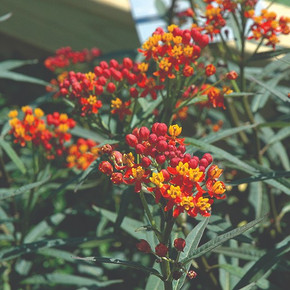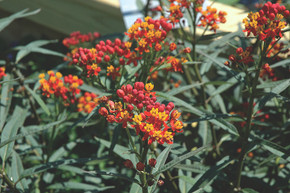Asclepias cur. 'Silky Gold', also known as Tropical Milkweed, this perennial has captured the heart of butterfly gardeners. Selected for more vibrant color and slightly larger flower clusters than the species. Showy, season-long blooms provide lasting color and a non-stop resource for monarchs. To provide the best benefit to monarchs, plant tropical milkweed alongside local varieties for a diverse offering of nectar and resources. Though tropical milkweed can perennialize in mild coastal regions, monarchs are best served when gardeners in southern climates (and California) manage plants in a way that supports natural migrations. Remove tropical milkweed late in the growing season when other milkweed species are naturally senescing. This encourages monarchs to move along and eliminates potential over-wintering sites. Plants flower best in full sun but tolerate light shade. Like other species, tropical milkweed is resistant to deer and rabbit browsing. A good plant mixed with other tall perennials and the long stems are excellent for cutting. Cut back in the fall after all caterpillars are gone (often left leafless by them) but be wary of the milky sap, which can cause irritation and injury to eyes and is poisonous if ingested. Water regularly - weekly, or more often in extreme heat or containers.

